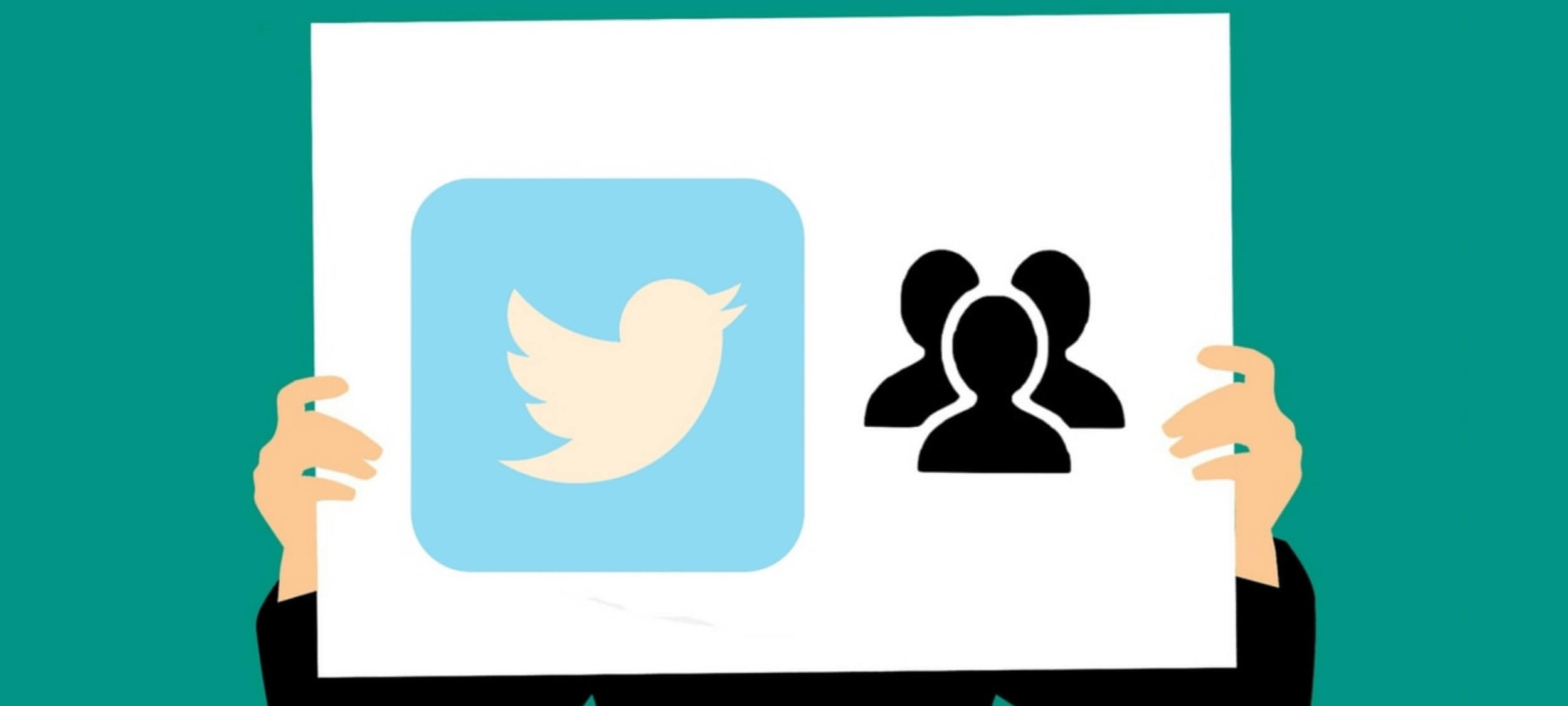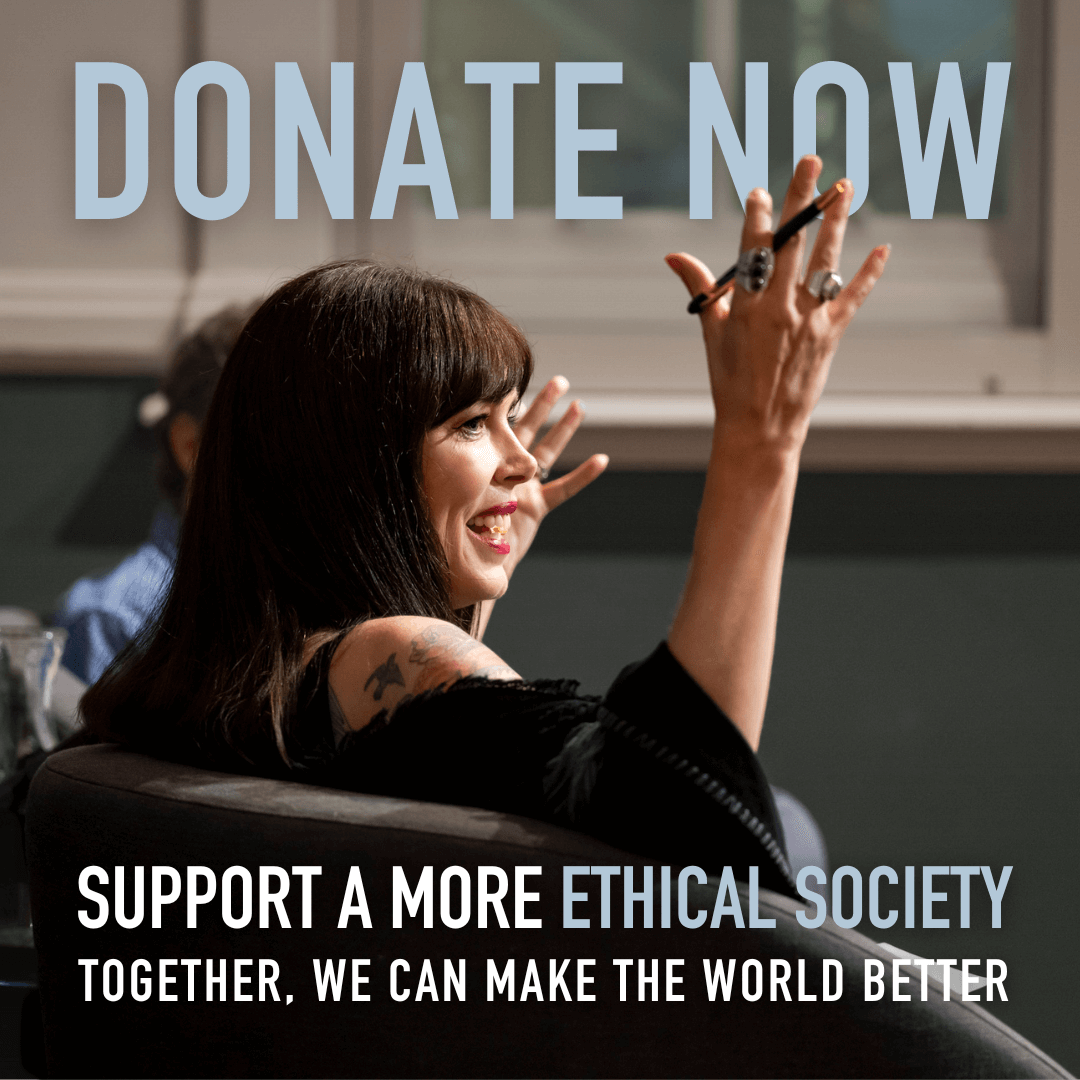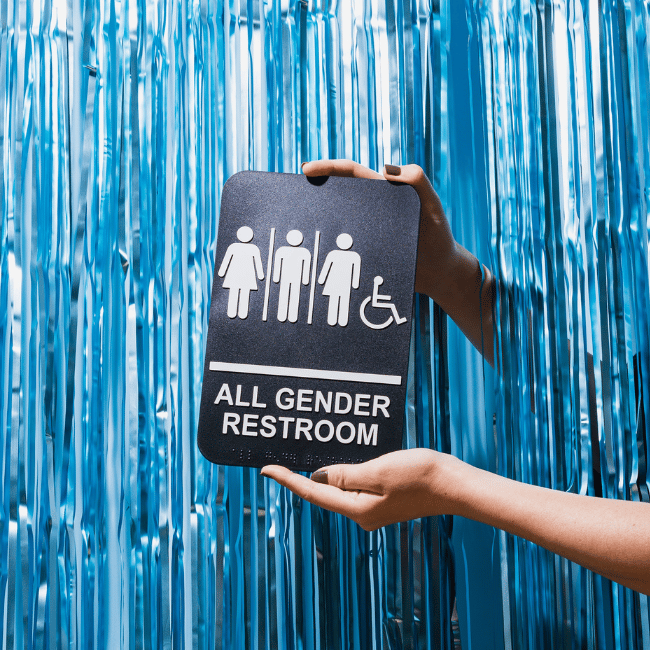Twitter made me do it!

Twitter made me do it!
Opinion + AnalysisHealth + WellbeingScience + Technology
BY Michael Salter The Ethics Centre 5 SEP 2016
In a recent panel discussion, academic and former journalist Emma Jane described what happened when she first included her email address at the end of her newspaper column in the late nineties.
Previously, she’d received ‘hate mail’ in the form of relatively polite and well-written letters but once her email address was public, there was a dramatic escalation in its frequency and severity. Jane coined the term ‘Rapeglish’ to describe the visceral rhetoric of threats, misogyny and sexual violence that characterises much of the online communication directed at women and girls.
Online misogyny and abuse has emerged as a major threat to the free and equal public participation of women in public debate – not just online, but in the media generally. Amanda Collinge, producer of the influential ABC panel show Q&A, revealed earlier this year that high profile women have declined to appear in the program due to “the well-founded fear that the online abuse and harassment they already suffer will increase”.
Twitter’s mechanics mean users have no control over who replies to their tweets and cannot remove abusive or defamatory responses.
Most explanations for online misogyny and prejudice tend to be cultural. We are told that the internet gives expression to or amplifies existing prejudice – showing us the way we always were. But this doesn’t explain why some online platforms have a greater problem with online abuse than others. If the internet were simply a mirror for the woes of society, we could expect to see similar levels of abuse across all online platforms.
The ‘honeypot for assholes’
This isn’t the case. Though it isn’t perfect, Facebook has a relatively low rate of online abuse compared to Twitter, which was recently described as a “honeypot for assholes”. One study found 88 percent of all discriminatory or hateful social media content originates on Twitter.
Twitter’s abuse problem illustrates how culture and technology are inextricably linked. In 2012, Tony Wang, then UK general manager of Twitter, described the organisation as “the free speech wing of the free speech party”. This reflects a libertarian commitment to uncensored information and rampant individualism, which has been a long-standing feature of computing and engineering culture – as revealed in the design and administration of Twitter.
Twitter’s mechanics mean users have no control over who replies to their tweets and cannot remove abusive or defamatory responses, which makes it an inherently combative medium. Users complaining of abuse have found that Twitter’s safety team does not view explicit threats of rape, death or blackmail as a violation of their terms of service.
The naïve notion that Twitter users should battle one another within a ‘marketplace of ideas’ . . . ignores the way sexism, racism and other forms of prejudice force diverse users to withdraw from the public sphere.
Twitter’s design and administration all reinforce the ‘if you can’t take the heat, get out of the kitchen’ machismo of Silicon Valley culture. Social media platforms were designed within a male dominated industry and replicate the assumptions and attitudes typical of men in the industry. Twitter provides users with few options to protect themselves from abuse and there are no effective bystander mechanisms to enable users to protect each other.
Over the years, the now banned Milo Yiannopoulos and now imprisoned ‘revenge porn king’ Hunter Moore have accumulated hundreds of thousands of admiring Twitter followers by orchestrating abuse and hate campaigns. The number of followers, likes and retweets can act like a scoreboard in the ‘game’ of abuse.
Suggesting Twitter should be a land of free speech where users should battle one another within a ‘marketplace of ideas’ might make sense to the white, male, heterosexual tech bro, but it ignores the way sexism, racism and other forms of prejudice force diverse users to withdraw from the public sphere.
Dealing with online abuse
Over the last few years, Twitter has acknowledged its problem with harassment and sought to implement a range of strategies. As Twitter CEO Dick Costolo stated to employees in a leaked internal memo, ‘We suck at dealing with abuse and trolls on the platform and we’ve sucked at it for years’. However, steps have been incremental at best and are yet to make any noticeable difference to users.
How do we challenge the most toxic aspects of internet culture when its norms and values are built into online platforms themselves?
Researchers and academics are calling for the enforcement of existing laws and the enactment of new laws in order to deter online abuse and sanction offenders. ‘Respectful relationships’ education programs are incorporating messages on online abuse in the hope of reducing and preventing it.
These necessary steps to combat sexism, racism and other forms of prejudice in offline society might struggle to reduce online abuse though. The internet is host to specific cultures and sub-cultured in which harassment is normal or even encouraged.
Libertarian machismo was entrenched online by the 1990s when the internet was dominated by young, white, tech-savvy men – some of whom disseminated an often deliberately vulgar and sexist communicative style that discouraged female participation. While social media has bought an influx of women and other users online it has not displaced these older, male-dominated subcultures.
The fact that harassment is so easy on social media is no coincidence. The various dot-com start-ups that produced social media have emerged out of computing cultures that have normalised online abuse for a long time. Indeed, it seems incitements to abuse have been technologically encoded into some platforms.
Designing a more equitable internet
So how do we challenge the most toxic aspects of internet culture when its norms and values are built into online platforms themselves? How can a fairer and more prosocial ethos be built into online infrastructure?
Changing the norms and values common online will require a cultural shift in computing industries and companies.
Earlier this year, software developer and commentator Randi Lee Harper drew up an influential list of design suggestions to ‘put out the Twitter trashfire’ and reduce the prevalence of abuse on the platform. Her list emphasises the need to give users greater control over their content and Twitter experience.
One solution might appear in the form of social media app Yik Yak – basically a local, anonymous version of Twitter but with a number of important built-in safety features. When users post content to Yik Yak, other users can ‘upvote’ or ‘downvote’ the content depending on how they feel about it. Comments that receive more than five ‘down’ votes are automatically deleted, enabling a swift bystander response to abusive content. Yik Yak also employs automatic filters and algorithms as a barrier against the posting of full names and other potentially inappropriate content.
Yik Yak’s platform design is underpinned by a social understanding of online communication. It recognises the potential for harm and attempts to foster healthy bystander practices and cultures. This is a far cry from the unfettered pursuit of individual free speech at all costs, which has allowed abuse and harassment to go unaddressed in the past.
It seems like it will require more than a behavioural shift from users. Changing the norms and values common online will require a cultural shift in computing industries and companies so the development of technology is underpinned by a more diverse and inclusive understanding of communication and users.
Ethics in your inbox.
Get the latest inspiration, intelligence, events & more.
By signing up you agree to our privacy policy
You might be interested in…
Explainer
Health + Wellbeing, Society + Culture
Ethics Explainer: Logical Fallacies
Big thinker
Science + Technology
Seven Influencers of Science Who Helped Change the World
Opinion + Analysis
Health + Wellbeing, Relationships
James Hird In Conversation Q&A
Opinion + Analysis
Relationships, Science + Technology
Injecting artificial intelligence with human empathy
BY Michael Salter
Scientia Fellow and Associate Professor of Criminology UNSW. Board of Directors ISSTD. Specialises in complex trauma & organisedabuse.com
BY The Ethics Centre
The Ethics Centre is a not-for-profit organisation developing innovative programs, services and experiences, designed to bring ethics to the centre of professional and personal life.
LGBT...Z? The limits of ‘inclusiveness’ in the alphabet rainbow

LGBT…Z? The limits of ‘inclusiveness’ in the alphabet rainbow
Opinion + AnalysisHealth + WellbeingRelationships
BY Jesse Bering The Ethics Centre 5 SEP 2016
A few years ago on Twitter, I found myself mindlessly clicking on a breadcrumb trail of ‘likes’ linked to a random post. It was under these banal circumstances that I came across a user profile with a brief but purposeful bio, one featuring the mysterious acronym ‘LGBTZ’.
The first four letters were obvious enough to me. LGBT, that bite-sized abbreviation for Lesbian, Gay, Bisexual, Transgender, has become a nearly ubiquitous rallying call for members of these historically marginalised groups and their allies. Even Donald Trump spoke this family friendly shorthand in his convention speech (although his oddly staggered enunciation sounded like he was a nervous pre-schooler tip-toeing through an especially tricky part of the alphabet). Trump also tacked on a “Q” for all those ill-defined “Queers” in the Republican audience. (A far less common iteration of this initialism includes an “I” for “Intersex” and an “A” for “Asexual.”)
But Z? The Twitter user’s profile image was a horse, and other language alluding to the fact he (or she) was an animal lover – and not of the platonic kind – brought that curious Z into sharp, squirm-worthy focus: “Zoophile”.
Perhaps we should take a hard look in the mirror and ask whether excluding Zs and Ps and others from the current tolerance roster isn’t doing to them precisely what was once done to us.
If you’re not familiar with the term, a zoophile is a person who is primarily sexually attracted to animals. The primarily part of that sentence is key. These aren’t just lascivious farmhands shagging goats because they can’t find willing human partners. That’s just plain bestiality.
Rather, these are people who genuinely prefer animals over members of their own species. If you hook a male zoophile’s genitals up to a plethysmograph (an extremely sensitive measure of sexual arousal), these men display stronger erectile responses to, say, images of stallions or Golden Retrievers than they do to naked human models.
I’d written about scientific research into zoophilia, along with other unusual sexualities, in my book Perv, so it wasn’t shocking to learn zoophiles have a social media presence. What’s surprising is this maligned demographic is apparently becoming emboldened enough to pull its Z up to the acronym table.
Paedophiles have started inching their much-loathed “P” in this direction as well, albeit in veiled form with the contemporary label “MAP” (“Minor-Attracted Person”). This is especially true for the so-called virtuous paedophiles, who are seriously committed to refraining from acting on their sexual desires because they realise the harm they’d cause to children. Similarly, many zoophiles consider themselves gentle animal welfare advocates, denouncing “zoosadists” who sexually abuse animals.
In any event, it’s easy to shun the Zs and Ps and all the other unwanted sexual minorities clawing their way up the acceptance ladder, refusing them entry into our embattled LGBT territory, because we don’t want to be associated with “perverts”. We’ve overcome tremendous obstacles to be where we are today. As an American growing up during the homophobic Reagan era, never in a million years did I imagine I’d legally marry another man one day. Yet I did. At this stage, perhaps we should take a hard look in the mirror and ask whether excluding Zs and Ps and others from the current tolerance roster isn’t doing to them precisely what was once done to us.
I know what you’re thinking. There’s a huge difference, since in these sad cases we’re dealing with the most innocent, most vulnerable members of society, who also can’t give their consent. That’s very much true.
When you actually try to justify our elbowing the Zs and Ps and others of their ilk out from under the rainbow umbrella though, it’s not so straightforward. Any seemingly ironclad rationale for their exclusion is stuffed more with blind emotion than clear-sighted reason.
To begin with, one doesn’t have to be sexually active to be a member of a sexual community. After all, I identified as gay before I had gay sex, just as I imagine most heterosexual people identify as straight before losing their virginity. In principle, at least, the same would apply to morally celibate zoophiles and paedophiles, neither of which are criminals and child molesters. Desires and behaviours are two different things.
Secondly, there’s now strong evidence paraphilias (lust outside of the norm) emerge in early childhood or, in the case of paedophilia, may even be innate. One zoophile, a successful attorney, told researchers that while his friends in middle school were all trying to get their hands on their fathers’ Playboys, he was secretly coveting the latest issue of Equus magazine.
Whether Zs or Ps are “born that way” or become that way early in life, it’s certainly not a choice they’ve made. This isn’t difficult to grasp but it tends to elude popular wisdom. I don’t know about you but I couldn’t become aroused by a Clydesdale or a prepubescent child if my life depended on it. That doesn’t make me morally superior to those unlucky enough to have brains that through no fault of their own respond this way to animals and children.
It’s an uncomfortable conversation to have, but there’s no science or logic to why “LGBT” contains the particular letters it does.
Not so long ago, remember, the majority of society saw gay men like me as immoral – even evil. Not for anything they’d done but for the simple fact that, neurologically, they fancied other men rather than women. The courts would have declared me mentally ill, not happily married. Just like conversion therapy has failed miserably to turn gay people straight, paraphilias are also immutable. Every clinical attempt to turn paedophiles into “teleiophiles” (attracted to reproductive-aged adults) has been a major flop.
Who knows what tortuous inner lives all those closeted Zs and Ps – and other unmentionables bearing today’s cross of scorn – experience, despite being celibate. Clinical psychologists report many of their clients are suicidal because of unwanted sexual desires – and this includes teenagers with a dawning awareness they are attracted to younger people.
I think it’s patently hypocritical for the LGBT community – which has worked so hard to overcome negative stereotypes, ostracism, and unjust laws – to shut out these people, fearing they would tarnish us more acceptable deviants. We’re only paying lip service to the concept of inclusiveness when we so publicly distance ourselves from those who need this communal protection the most.
In fact, LGB people arguably share more in common with the Zs and Ps than they do the Ts, since being transgender isn’t about who (or what) you’re sexually attracted to, but the gender you identify with. Unlike those representing the other letters in this character soup, trans people say their sexuality plays no role at all. Why then are Ts included while other, more unspeakable, sexual minorities aren’t?
Here’s my point then. It’s an uncomfortable conversation to have but there’s no science or logic to why “LGBT” contains the particular letters it does. Instead, it’s an evolving social code. So, is the filter that shapes this code just another moralistic lens that casts some human beings as inherently inferior and worthier of shame than others? And if this is so, who gets to control this filter and why?
Ethics in your inbox.
Get the latest inspiration, intelligence, events & more.
By signing up you agree to our privacy policy
You might be interested in…
Explainer
Relationships
Ethics Explainer: Ad Hominem Fallacy
Opinion + Analysis
Relationships
Appreciation or appropriation? The impacts of stealing culture
Explainer
Politics + Human Rights, Relationships
Ethics Explainer: Gender
Opinion + Analysis
Health + Wellbeing








